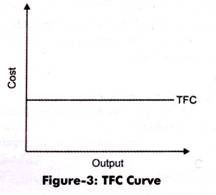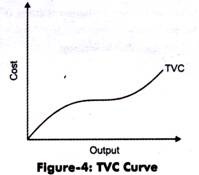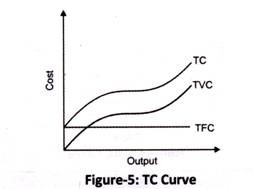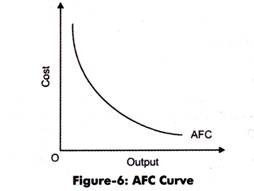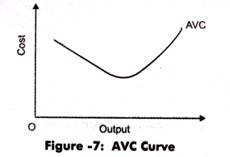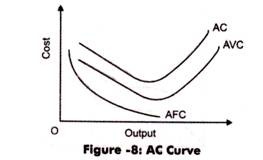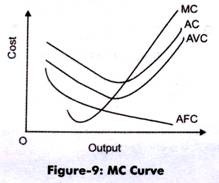Conceptually, in the short run, the quantity of at least one input is fixed and the quantities of the other inputs can be varied.
In the short-run period, factors, such as land and machinery, remain the same.
On the other hand, factors, such as labor and capital, vary with time. In the short run, the expansion is done by hiring more labor and increasing capital. The existing size of the plant or building cannot be increased in case of the short run.
Following are the cost concepts that are taken into consideration in the short run:
i. Total Fixed Costs (TFC):
Refer to the costs that remain fixed in the short period. These costs do not change with the change in the level of output. For example, rents, interest, and salaries. In the words of Ferguson, “Total fixed cost is the sum of the ‘short run explicit fixed costs and implicit costs incurred by the entrepreneur.” Fixed costs have implication even when the production of an organization is zero. These costs are also called supplementary costs, indirect costs, overhead costs, historical costs, and unavoidable costs.
ADVERTISEMENTS:
TFC remains constant with respect to change in the level of output. Therefore, the slope of TFC curve is a horizontal straight line.
Figure-3 depicts the TFC curve:
As shown in Figure-3, TFC curve is horizontal to x- axis. From Figure-3, it can be seen that TFC remains the same at all the levels with respect to change in the level of output.
ii. Total Variable Costs (TVC):
Refer to costs that change with the change in the level of production. For example, costs incurred on purchasing raw material, hiring labor, and using electricity. According to Ferguson, “total variable cost is the sum of amounts spent for each of the variable inputs used” If the output is zero, then the variable cost is also zero. These costs are also called prime costs, direct costs, and avoidable costs.
Figure-4 shows the TVC curve:
In Figure-4, it can be seen that TVC curve changes with the change in the level of output.
iii. Total Cost (TC):
Involves the sum of TFC and TVC.
ADVERTISEMENTS:
It can be calculated as follows:
Total Cost = TFC + TVC
TC also changes with the changes in the level of output as there is a change in TVC.
Figure-5 shows the total cost curve derived from sum of TVC and TFC:
It should be noted that both TVC and TC increase initially at decreasing rate and then they increase at increasing rate Here, decreasing rate implies that the rate at which cost increases with respect to output is less, whereas increasing rate implies the rate at which cost increases with respect to output is more.
iv. Average Fixed Costs (AFC):
Refers to the per unit fixed costs of production. In other words, AFC implies fixed cost of production divided by the quantity of output produced.
It is calculated as:
ADVERTISEMENTS:
AFC = TFC/Output
TFC is constant as production increases, thus AFC falls.
Figure-6 shows the AFC curve:
ADVERTISEMENTS:
In Figure-6 AFC curve is shown as a declining curve, which never touches the horizontal axis. This is because fixed cost can never be zero. The curve is also called rectangular hyperbola, which represents that total fixed costs remain same at all the levels.
v. Average Variable Costs (AVC):
Refer to the per unit variable cost of production. It implies organization’s variable costs divided by the quantity of output produced.
It is calculated as:
AVC = TVC/ Output
ADVERTISEMENTS:
Initially, AVC decreases as output increases. After a certain point of time, AVC increases with respect to increase in output.
Thus, it is a U- shaped curve, as shown in Figure-7:
vi. Average Cost (AC):
Refer to the total costs of production per unit of output.
AC is calculated as:
AC = TC/ Output
ADVERTISEMENTS:
AC is also equal to the sum total of AFC and AVC. AC curve is also U-shaped curve as average cost initially decreases when output increases and then increases when output increases.
Figure-8 shows the AC curve:
vii. Marginal Cost:
Refer to the addition to the total cost for producing an additional unit of the product.
Marginal cost is calculated as:
MC = TCn = TCn-1
ADVERTISEMENTS:
n= Number of units produced
It is also calculated as:
MC = ∆TC/∆Output
MC curve is also a U-shaped curve as marginal cost initially decreases as output increases and afterwards, rises as output increases. This is because TC increases at decreasing rate and then increases at increasing rate.
Figure- 9 shows the MC curve:
Let us learn the aforementioned cost concepts numerically with the help of Table-1:
